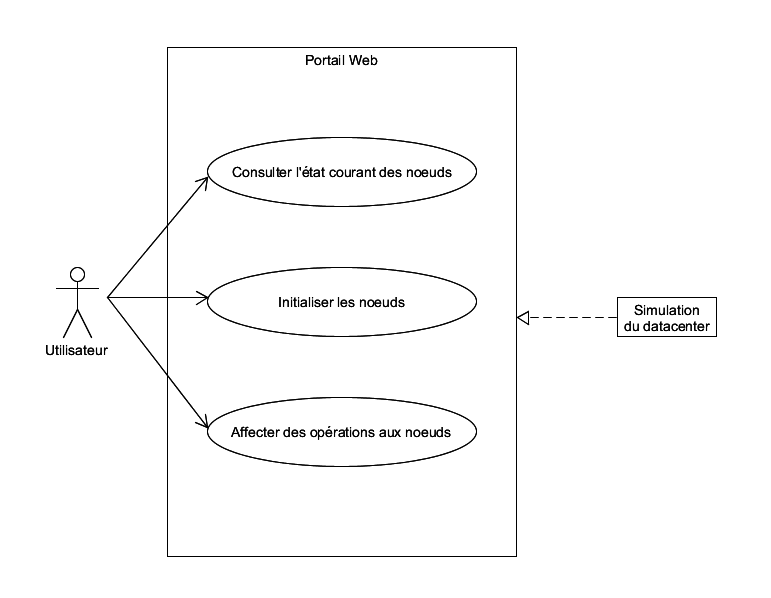Proj-2014-2015-Mini datacenter portail SRS: Difference between revisions
Robin.Eudes (talk | contribs) No edit summary |
Robin.Eudes (talk | contribs) |
||
| Line 14: | Line 14: | ||
* oar |
* oar |
||
* docker |
* docker |
||
* cluster |
|||
==1.4 References== |
==1.4 References== |
||
* [https://developer.nvidia.com/get-started-jetson Get Started Jetson TK1] |
* [https://developer.nvidia.com/get-started-jetson Get Started Jetson TK1] |
||
Revision as of 07:18, 6 April 2015
1. Introduction
1.1 Purpose of the requirements document
This Software Requirements Specification (SRS) identifies the requirements for this datacenter's webUI. The purpose of this document is to easily explain the development of this project and to provide instructions to understand and use the software.
1.2 Scope of the product
The purpose of this project is to provide an userfriendly web interface to simulate and use a small datacenter. Each node of the datacenter can perform some operations, users can interact with a group of nodes or a specific one.
1.3 Definitions, acronyms and abbreviations
- node
- datacenter
- frontend
- oar
- docker
- cluster
1.4 References
- Get Started Jetson TK1
- Grid'5000
- OAR OAR is a versatile resource and task manager (also called a batch scheduler) for HPC clusters and other computing infrastructures. It's used on Grid'5000.
- oar-docker: oar-docker is a set of docker images especially configured for deploying your own OAR cluster. The main idea is to have a mini development cluster with a frontend, a server and some nodes that launch in just a few seconds on a simple laptop.
- Kameleon : Kameleon is a simple but powerful tool to generate customized appliances.
1.5 Overview of the remainder of the document
The SRS document includes 3 main chapters :
- General description, which contains the general characteristics of the project and our implementation choices.
- Specific requirements, which gives the main requirements of each function.
- Product evolution, which details the differents steps of implementation we chose.
2. General description
2.1 Product perspective
Tout d'abord, notre projet se base sur une infrastructure simulée par OAR-docker. Cette infractructure contient divers noeuds, chacun exploitable par un un utilisateur à la fois. Notre but est de produire une interface web facilement utilisable et compréhensible par des non-initiés,
2.2 Product functions
With this interface, users will be able to manage each node, submit a job to a node, cancel a job, create a node or delete a node.
2.3 User characteristics
L'utilisateur n'a pas besoin de connaître la façon dont s'instancie une ressource pour pouvoir utiliser l'interface.
2.4 General constraints
accès à la simulation dnas un environnement privé OAR-docker installé
2.5 Assumptions and dependencies
Chaque utilisateur ne travaille pas sur une même infrastructure, puisque les environnements sont privés.
3. Product evolution
We can improve this webui, we just use a part of what OAR API can do.
4. Appendices
This document is inspired of the IEEE/ANSI 830-1998 Standard.
References:

